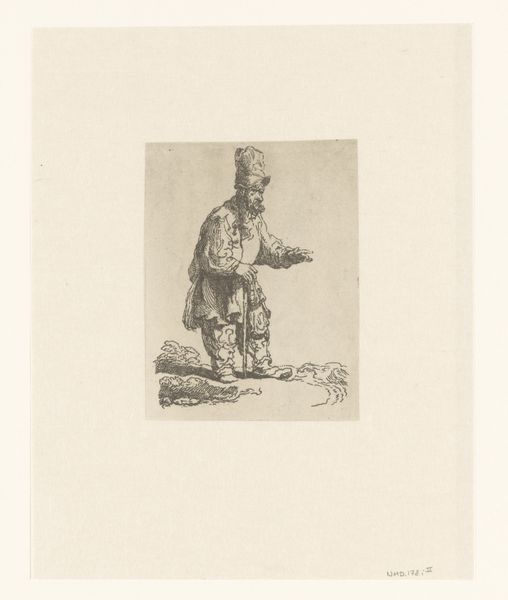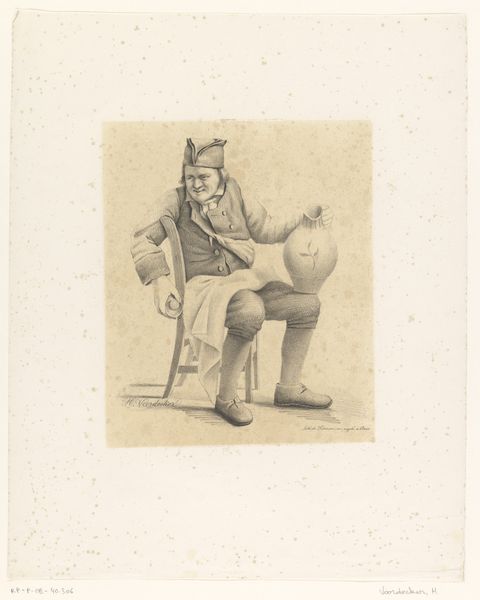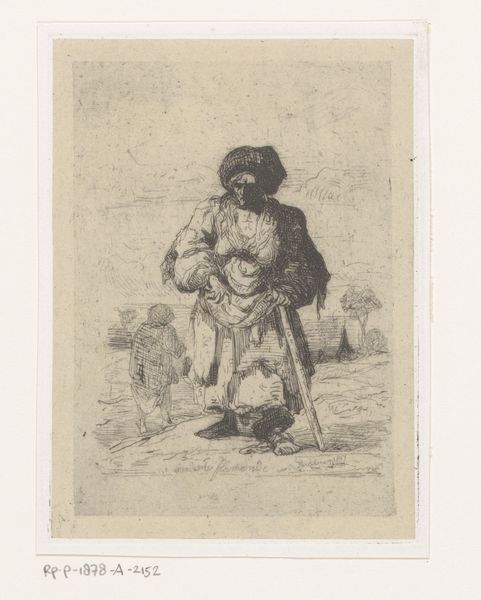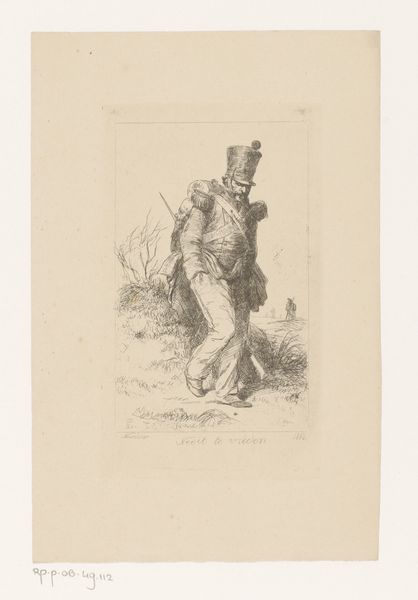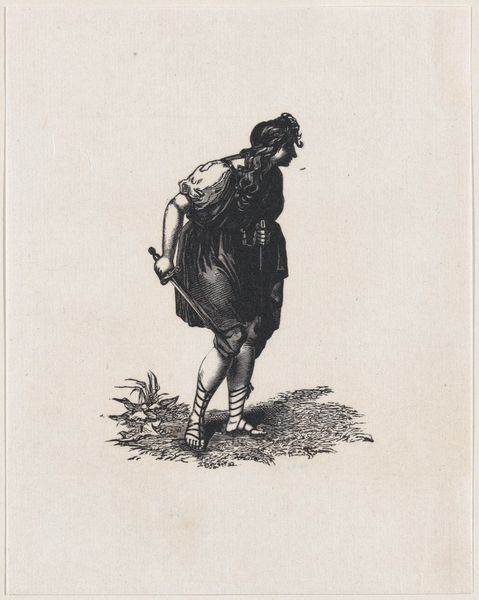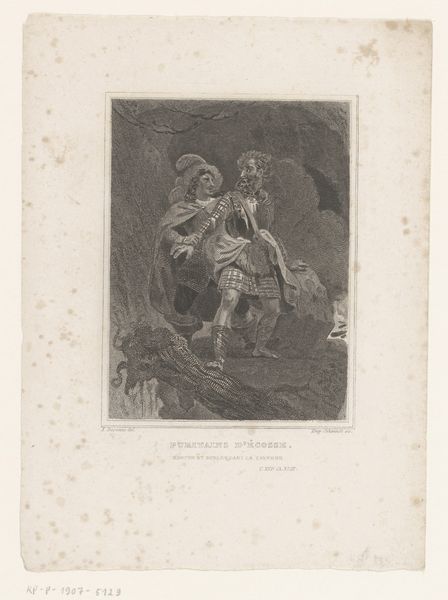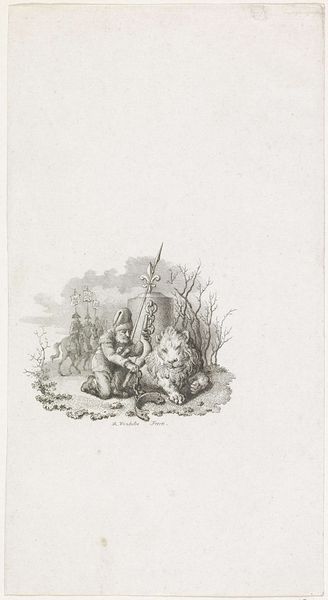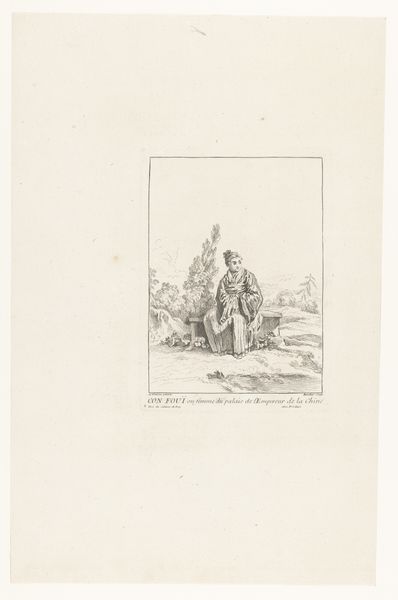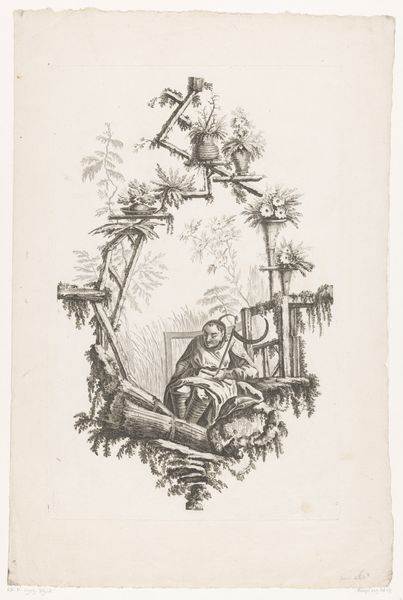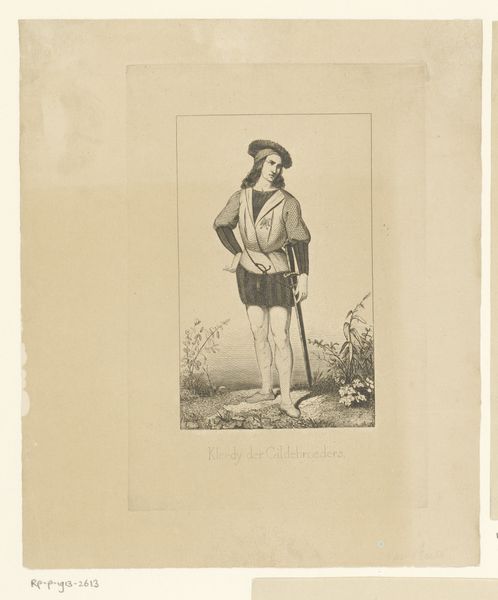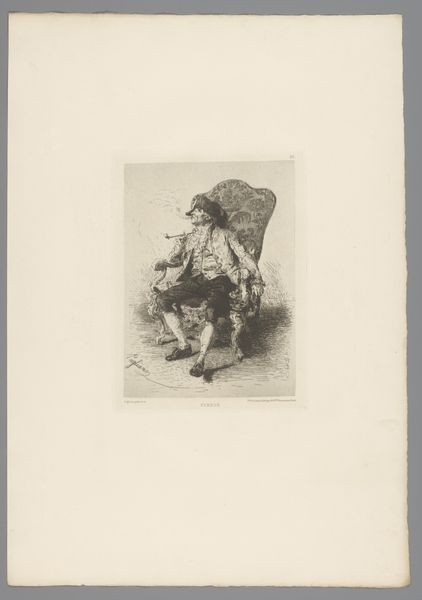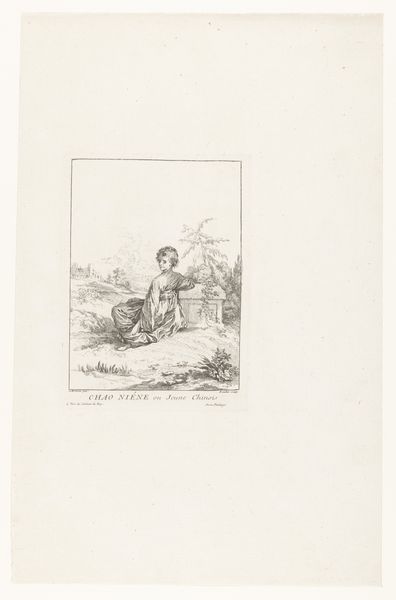
Dimensions: 168 mm (height) x 118 mm (width) (bladmaal)
Curator: This print is entitled “Hvedebrødsmanden,” or “The Wheaten Bread Man,” created by H.C. Henneberg in 1852. It’s currently part of the collection at the SMK, the National Gallery of Denmark. What catches your eye about this piece? Editor: Immediately, there's a sense of solitude. He's resting, yes, but there's also something almost melancholy about him. It makes me think about burdens, the tangible one he carries on his back, and perhaps others unseen. Curator: Interesting. In terms of visual language, consider the prominence given to the man's wooden shoes, practically iconic clogs, as large as his head, suggesting rural or perhaps working-class life, echoing a familiar Romanticism trope of that time. Editor: They anchor him to the earth, literally and figuratively. But his gaze… it doesn't meet ours. Is he contemplating the road ahead, or reflecting on what he’s left behind? The walking stick he holds, does it signify he has been travelling, or the need for support in old age? Curator: He’s both connected to and detached from the landscape. The wheaten bread man could possibly have carried baked goods for a journey, or sold them to travelers, or simply worked on the land. Consider too that wheat itself symbolizes life, nourishment, the rewards of labor. Editor: It’s evocative – but leaves space for interpretation. Maybe this man's isolation is self-imposed, maybe the bread is symbolic for nourishment of one's own self during hardship. Curator: That isolation, common across genre paintings of this period, often points to an idealised vision of simplicity in the face of growing industrialization, harkening back to agrarian virtues and hard labor, with this print being executed through engravings and woodcuts. The romanticism in the backdrop further enhances this longing, and makes you wonder whether there truly is solace for him and whether the weight he bears can be traded for peace. Editor: In our time, perhaps, such depictions have almost reversed: We find a longing in returning to those simple times through works like these, romanticized as they are, with time passing. Perhaps that's the magic, we continue to find in this quiet character some aspect of our own. Curator: Precisely. Ultimately, the "Wheaten Bread Man" speaks to enduring human themes – labor, landscape, inner lives – using accessible visual cues rooted in the anxieties of the past.
Comments
No comments
Be the first to comment and join the conversation on the ultimate creative platform.
